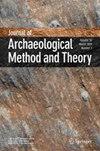The Impact of Cooperation Under Climate Constraints: An Agent-Based Model for Exploring Paleolithic Behavioral Adaptations in the Inner Asian Mountain Corridor.
IF 2.8
1区 历史学
Q1 ANTHROPOLOGY
引用次数: 0
Abstract
Modern humans dispersed throughout the entire world during the Pleistocene, completing an important part of our evolutionary history. Central Asia, one of the most challenging territories to be colonized, is characterized by continental climate and stark geographic contrasts and therefore offers an ideal context for testing hypotheses about the role of human behavior in dispersals under adverse conditions. Here, we introduce an evolutionary theoretical agent-based model exploring the effects of cooperation on dispersal under different climate constraints in two study sub-regions, the Altai and Tian Shan Mountains. The model uses an evolutionary framework to test cooperation dilemmas in four theoretical climate scenarios based on the average temperature during glacial and interglacial periods. We show that (a) population size can significantly influence the pressure on the group, such that a larger population implies more pressure to cooperate; (b) cooperative behaviors are needed for survival in the harshest conditions; and (c) if the initial probability of non-cooperation is higher, then human groups will tend to be non-cooperative even if a cooperative subgroup pushes them to cooperate. Our results demonstrate that the degree of cooperation significantly impacts survival during periods of extreme climatic deterioration. This work provides valuable insights into the mechanisms influencing the settlement of climatically challenging regions by prehistoric groups. Supplementary Information The online version contains supplementary material available at 10.1007/s10816-025-09739-z.气候约束下合作的影响:中亚山地走廊旧石器时代行为适应的一个基于主体的模型
现代人类在更新世分散到整个世界,完成了我们进化史的一个重要部分。中亚是最具挑战性的殖民地之一,其特点是大陆性气候和鲜明的地理对比,因此为检验关于人类行为在不利条件下分散作用的假设提供了理想的环境。本文以阿尔泰和天山两个研究分区为研究对象,建立了一个基于agent的进化理论模型,探讨了不同气候条件下合作对物种扩散的影响。该模型采用进化框架,基于冰期和间冰期的平均温度,对四种理论气候情景下的合作困境进行了测试。我们表明(a)群体规模可以显著影响群体的压力,这样一个更大的群体意味着更大的合作压力;(b)在最恶劣的条件下生存需要合作行为;(c)如果不合作的初始概率较高,那么即使有合作的子群体推动他们合作,人类群体也会倾向于不合作。我们的研究结果表明,在极端气候恶化期间,合作程度显著影响生存。这项工作为史前群体影响气候挑战性地区定居的机制提供了有价值的见解。补充信息在线版本提供补充资料,网址为10.1007/s10816-025-09739-z。
本文章由计算机程序翻译,如有差异,请以英文原文为准。
求助全文
约1分钟内获得全文
求助全文
来源期刊
CiteScore
6.30
自引率
8.70%
发文量
43
期刊介绍:
The Journal of Archaeological Method and Theory, the leading journal in its field, presents original articles that address method- or theory-focused issues of current archaeological interest and represent significant explorations on the cutting edge of the discipline. The journal also welcomes topical syntheses that critically assess and integrate research on a specific subject in archaeological method or theory, as well as examinations of the history of archaeology. Written by experts, the articles benefit an international audience of archaeologists, students of archaeology, and practitioners of closely related disciplines. Specific topics covered in recent issues include: the use of nitche construction theory in archaeology, new developments in the use of soil chemistry in archaeological interpretation, and a model for the prehistoric development of clothing. The Journal''s distinguished Editorial Board includes archaeologists with worldwide archaeological knowledge (the Americas, Asia and the Pacific, Europe, and Africa), and expertise in a wide range of methodological and theoretical issues. Rated ''A'' in the European Reference Index for the Humanities (ERIH) Journal of Archaeological Method and Theory is rated ''A'' in the ERIH, a new reference index that aims to help evenly access the scientific quality of Humanities research output. For more information visit: http://www.esf.org/research-areas/humanities/activities/research-infrastructures.html Rated ''A'' in the Australian Research Council Humanities and Creative Arts Journal List. For more information, visit: http://www.arc.gov.au/era/journal_list_dev.htm

 求助内容:
求助内容: 应助结果提醒方式:
应助结果提醒方式:


